Texans will never give up their pickups for mass transit. There can be no greater happiness than toolin’ down a good highway with no particular place to go. The fresh Texas countryside fills your vision and time becomes fragmented; the distance between moments seems greater. It’s the essence of freedom.
Highway 290 is a U.S. highway located entirely within the state of Texas. It runs from Houston in the east to just outside of Harper, Texas on the west side, before being murdered by Interstate 10. Since it runs through Austin, most of us have used the roadway to visit that unique area of the state known as the Hill Country, a beautiful drive anytime but especially in the spring.
Along U.S. Highway 290, about 12 miles this side of Fredericksburg lies an amazing experience that was the vision of President and Mrs. Johnson. Their hope was that the historic properties on either side of the Pedernales River near Stonewall and Johnson City would be preserved and shared with local communities and the public. Texas Parks and Wildlife operates the state park on the Pedernales River opposite the LBJ Ranch. The National Park Service administers two areas: the LBJ Ranch and sites within Johnson City, 14 miles to the east. Together the two parks interpret the Texas Hill Country, its influence on Lyndon Johnson and his political career.
For those most interested in the history of our 36th President the ranch is a must visit, as is the boyhood home and other related exhibits in Johnson City. For me, I am more interested in the magic of the countryside—flowing streams, hills covered with wildflowers, scattered farms and fat cattle—and understanding how our ancestors made a living from this land. Don’t get me wrong: everyone should go see the LBJ ranch, but given time constraints imposed by living in Bastrop, seeing everything offered between Stonewall and Johnson City is too much stuff to do in a day. You have to be selective.
Start by pulling off U.S. 290 after the large brown sign directing travelers to the facility visitor center. This is the headquarters of the LBJ State Park and Historic Site. You are greeted by ample parking, a large modern cut limestone building, clean restrooms and delectably cool air conditioning. Staff here are especially friendly and accommodating—specialists in creating bonhomie. It’s easy to spend an hour or more in the visitor complex. There is a large gift shop, two recurring films playing and an interpretative exhibit nearby. You pick up your vehicle pass for the ranch tour inside the visitor center. Everything is free, except for the guided tour of the Western White House.
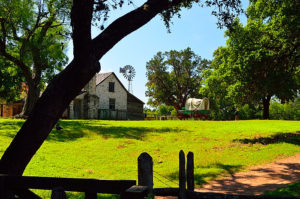
Sauer-Beckman Living History Farm
There is, however, much more to see during your stop at the visitor complex. Take a 10 minute walk along the trail that leads out from behind the visitor center and it will carry you back to the turn of the nineteenth century. Central Texas was settled by a large contingent of German immigrants during this time and the Sauer family settled the land right next to the visitor center in 1869. They raised ten children and added on to their original rock and log cabins. Emil and Emma Beckman acquired the property in 1900. A good cotton crop in 1915 allowed them to build a new barn, to add a frame room onto the old rock structure and to construct porches connecting the Victorian house they had built. Today the property is owned by TPWD and is known as the Sauer-Beckman Living History Farm.
Somewhat like Washington-on-the-Brazos, this is a working farm with interpreters carrying out the daily chores in period costume. At the time of our visit, there were heirloom chickens roaming free, a new born bull, milk cows, turkeys, working horses and a fat old sow pig, snoozing in her wallow in the noonday sun. Surrounded by 150-year old trees, the barn and blacksmith shop are filled with turn of the century implements and gadgets, the home and outbuildings are fitted and furnished as they would have been in the early 1900’s and the ladies in the kitchen are cooking up a noon meal from scratch, using all fresh ingredients from the farm. You can smell the authenticity of fresh fixin’s. All vegetables are grown on site, as is the meat and milk. During this time “butcher clubs” were common. Families would rotate butchering of livestock and share the meat amongst themselves throughout the summer.
Leaving behind the nostalgia of early farm life in the Hill Country, the driving tour of the LBJ ranch takes you into the heart and soul of big-hat Texas ranching. The scale of everything is immense. First you cross over the Pedernales River, a wide channel of lazy current sufficient to sustain thousands of acres of cattle country. In the rainy
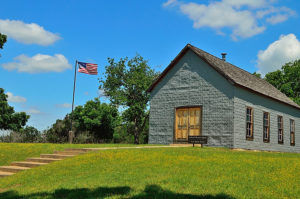
One Room School House
season it can also destroy all you’ve worked for if you build too close. Just before entering the Lyndon B. Johnson National Historical Park, up on the top of a hill to the North is the Junction Schoolhouse—a one-roomer that contained 1st through 8th grades, all taught and managed by one courageous school teacher. Four-year-old Lyndon learned to read here, near his home.
Drive a bit further into the complex and you arrive at the Johnson Family Cemetery, off to the left, under the shade of an
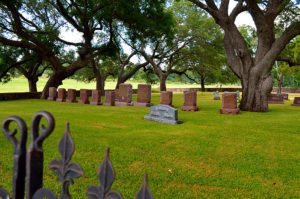
Johnson Family Cemetery
ancient grove of live oaks. Quiet, tranquil, neatly barbered and beautiful. Protected by a wrought-iron fence, with the Pedernales gently flowing nearby, you will never experience a more calming scene of peacefulness. Nearby on the opposite side is a reconstructed version of LBJ’s birthplace, the original house rebuilt by the President in 1964 to serve as a guest house.
As you mount up and continue the driving tour, there is a point at which you come out of the trees and enter the sprawling ranch itself. How beautiful . . . here’s where “spacious skies and amber waves of grain” came from . . . as far as you can see. The land is all pastures, hills, and range—the big hayshed loaded to the rafters. Great championship Hereford cattle lumber in single file to visit one of several ponds, oblivious to their own rare bloodlines or the history made on this sweeping landscape. The paved road winds through the property, bordered by swaying bluestem and introduced grasses, passing by the modest home of the President’s grandparents and the current-day ranch foreman’s house—this is very much a working ranch.
As you round the bend by the breeding pens and corrals, you come upon a huge show barn. Built for the care and training of cattle, it continues to serve as the center for
present day ranching operations. This is worth a stop. Normally, you will find cowboys inside (all wearing National Park Service patches), along with photos, demonstrations and an opportunity to practice roping skills on a roping dummy. They are pleased to have visitors, love to answer questions about the ranch and will let you get up close and personal with a champion Hereford bull or steer.
As you approach the final stop, almost for the first time during the tour, the long narrow asphalt airstrip shows itself, along with landing lights and distance markers. This is the landing approach used by LBJ’s official Lear Jet, Airforce ½. For over 6,000 feet, this arrow straight stretch of runway hides among the bunch grasses and prairie
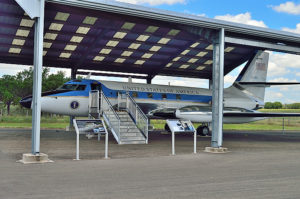
Air Force 1/2
only to appear again as you near the Western White House. A refurbished version of the President’s aircraft is open for viewing at the hanger area, just outside the ranch house.
Obscuring your view of the ranch house itself is a modern visitor center. Inside there is a shopping area, continuous running educational movies and an assortment of restrooms. This is also where tickets are purchased for the tour of the first floor of the Texas White House. The tour is led by park rangers, takes about 20 minutes to complete and is chocked full of insights
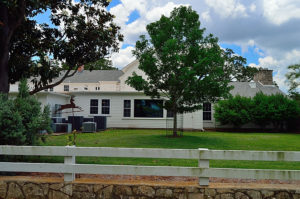
Backside of the Western White House
and private idiosyncrasies of what LBJ was like when he was home. I felt a sense of awe and pride standing outside the sprawling homestead looking down at the grassy knoll where world leaders were once served barbeque by the Pedernales. To rise from a one-room schoolhouse to become leader of the free world is an impossible transformation in most of the world.
President and Mrs. Johnson donated a portion of the LBJ Ranch to the National Park Service in 1972. Johnson stipulated to park planners that the LBJ Ranch remain a working ranch and not a “sterile relic of the past.” For the President and Ladybird, the charge was to live out the remaining years left to them and then open it to all who wished to visit. It was an act of generosity which can only be appreciated by making a visit. Do it. You won’t be disappointed.


